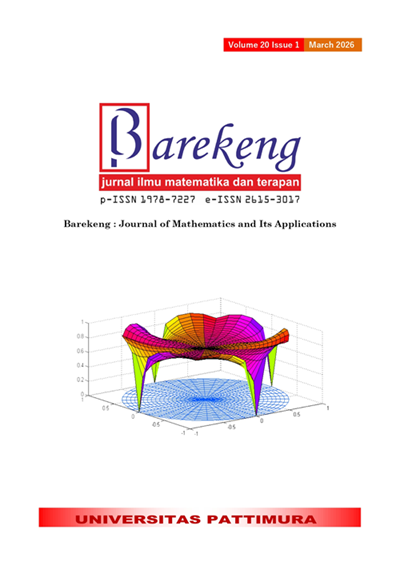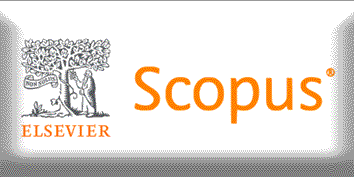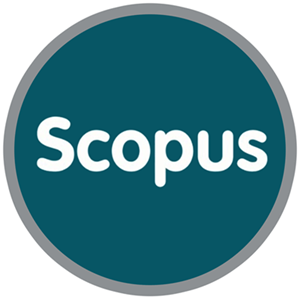ANALYSIS OF APRIORI AND K-NEAREST NEIGHBOR (KNN) ALGORITHM IN RECOMMENDING APPROPRIATE LEARNING METHOD
Abstract
The study investigates the utilization of data mining techniques, especially the Apriori algorithm and K-Nearest Neighbor (KNN) classification, in recommending appropriate learning methods based on student data. The purpose of this research is to analyze patterns and groupings in students’ behavior, preferences, and academic performance to support more informed and personalized educational strategies. The Apriori algorithm is used to identify frequent associations among learning related attributes, while KNN classification helps group students with similar learning characteristics. The analysis revealed that the digital learning method is the most preferred by students, with a percentage of 84.29%, followed by the traditional lecture method at 15.70%. These results reflect a notable trend toward technology-driven, flexible learning environments, although conventional approaches continue to hold relevance for a portion of learners. The research concludes that the integration of the Apriori algorithm and KNN clustering proves to be an effective analytical framework for facilitating adaptive learning. This approach allows educators and institutions to make data-driven decisions in tailoring instructional methods that align with the diverse needs and preferences of students.
Downloads
References
S. B. W. Sukoco, Badri Munir, Akhmaloka, STRATEGI PENINGKATAN KUALITAS MENUJU PERGURUAN TINGGI BERKELAS DUNIA. 2023. [Online]. Available: http://dinkes.sulselprov.go.id/page/download
J. M. Sihombing, S. Syahrial, and U. S. Manurung, “KESULITAN PESERTA DIDIK DALAM PEMBELAJARAN MATEMATIKA MATERI PERKALIAN DAN PEMBAGIAN DI SEKOLAH DASAR,” J. Didakt. Pendidik. Dasar, vol. 7, no. 3, pp. 1003–1016, 2023. doi: https://doi.org/10.26811/didaktika.v7i3.1177
J. M. Adnan.K, Afandi F, “HUBUNGAN KEMAMPUAN LITERASI NUMERASI DENGAN HASIL BELAJAR MATEMATIKA SISWA KELAS V SD GUGUS II,” pp. 423–430, 2021.
M. Mariamah, S. Suciyati, and H. Hendrawan, “KEMAMPUAN NUMERASI SISWA SEKOLAH DASAR DITINJAU DARI JENIS KELAMIN,” Tunas : J. Penelit. Pendidik. Dasar, vol. 1, no. 2, pp. 17–19, Dec. 2021. [Online]. Available: https://jurnal.fkip.unmul.ac.id/index.php/tunas/article/view/818
U. Umar and A. Widodo, “ANALISIS FAKTOR PENYEBAB RENDAHNYA KEMAMPUAN AKADEMIK SISWA SEKOLAH DASAR DI DAERAH PINGGIRAN,” J. Educ. FKIP UNMA, vol. 8, no. 2, pp. 458–465, 2022. doi: https://doi.org/10.31949/educatio.v8i2.2131
F. T. P. Pangesti, “MENUMBUHKEMBANGKAN LITERASI NUMERASI PADA PEMBELAJARAN MATEMATIKA DENGAN SOAL HOTS,” Indones. Digit. J. Math. Educ., vol. 5, no. 9, pp. 566–575, 2018, [Online]. Available: http://idealmathedu.p4tkmatematika.org
H. Nurhayati and N. W., Langlang Handayani, “JURNAL BASICEDU. JURNAL BASICEDU,” J. Basicedu, vol. 5, no. 5, pp. 3(2), 524–532, 2020, [Online]. Available: https://journal.uii.ac.id/ajie/article/view/971
D. S. Damayanti and P. I. Perdana, “PENGEMBANGAN E-MODUL PEMBELAJARAN TEMATIK (EMOTIK) BERBASIS FLIPBOOK PADA TEMA 8 SUBTEMA 1 KELAS V DI SEKOLAH DASAR,” J. Basicedu, vol. 7, no. 5, pp. 2886–2897, 2023. doi: https://doi.org/10.31004/basicedu.v7i5.5932
N. L. Azizah, V. Liansari, and A. I. Kusuma, “NUMERACY DEVELOPMENT TRAINING FOR ELEMENTARY SCHOOL STUDENTS AT SD MUHAMMADIYAH 2 WARU SIDOARJO,” Community Empower., vol. 8, no. 7, pp. 1033–1039, 2023. doi: https://doi.org/10.31603/ce.8781
V. Liansari and N. L. Azizah, “THE RELATIONSHIP BETWEEN THE USE OF ACTIVE, INNOVATIVE, CREATIVE, AND FUN LEARNING TECHNIQUES AND ONLINE ENGLISH LEARNING BY MULTIDISCIPLINARY STUDENTS,” KnE Soc. Sci., vol. 2022, pp. 18–23, 2022, doi: https://doi.org/10.18502/kss.v7i10.11205
A. M. Zen, A. Muhith, and S. S. Wahono, “DIGITAL FLIPBOOK-BASED LEARNING MEDIA DESIGN IN INTEGRATED THEMATIC LEARNING ON THE THEME OF GROWTH AND DEVELOPMENT OF LIVING THINGS IN CLASS III INCLUSIVE …,” Attadib J. …, vol. 8, no. 1, 2024, [Online]. Available: https://www.jurnalfai-uikabogor.org/index.php/attadib/article/view/2700%0Ahttps://www.jurnalfai-uikabogor.org/index.php/attadib/article/download/2700/939. doi: https://doi.org/10.32507/attadib.v8i1.2700
S. Silfia, “PENGEMBANGAN MEDIA PEMBELAJARAN FLIPBOOK DIGITAL BERBASIS LITERASI SAINS UNTUK SISWA KELAS IV SEKOLAH DASAR,” no. July, pp. 1–23, 2020.
R. Hanifan, T. D. Putra, and D. Hartanti, “IMPLEMENTASI ALGORITMA APRIORI UNTUK PENGELOMPOKKAN PRODUK TERBAIK PADA PANGKALAN SUDIAWATI,” Komputa : J. Ilm. Komput. dan Informatika, vol. 11, no. 2, pp. 59–67, 2022. doi: https://doi.org/10.34010/komputa.v11i2.7363
B. Hardiyanto and F. Rozi, “PREDIKSI PENJUALAN SEPATU MENGGUNAKAN METODE K-NEAREST NEIGHBOR,” JOEICT(Jurnal Educ. Inf. Commun. Technol., vol. 04, no. 02, pp. 13–18, 2020.
M. H. Santoso, “APPLICATION OF ASSOCIATION RULE METHOD USING APRIORI ALGORITHM TO FIND SALES PATTERNS CASE STUDY OF INDOMARET TANJUNG ANOM,” Brill. Res. Artif. Intell., vol. 1, no. 2, pp. 54–66, 2021. doi: https://doi.org/10.47709/brilliance.v1i2.1228
A. N. Rahmi and Y. A. Mikola, “IMPLEMENTASI ALGORITMA APRIORI UNTUK MENENTUKAN POLA PEMBELIAN PADA CUSTOMER (STUDI KASUS : TOKO BAKOEL SEMBAKO),” Inf. Syst. J., vol. 4, no. 1, pp. 14–19, 2021, [Online]. Available: https://jurnal.amikom.ac.id/index.php/infos/article/view/561. doi: https://doi.org/10.24076/infosjournal.2021v4i1.561
A. Sanjaya and T. Wahyana, “PENERAPAN METODE K-NEAREST NEIGHBOUR UNTUK SISTEM PREDIKSI KELULUSAN SISWA MTS NURUL MUSLIMIN BERBASIS WEBSITE,” J. Transform. Mandalika, vol. 3, no. 1, pp. 31–47, 2022, [Online]. Available: https://www.ojs.cahayamandalika.com/index.php/jtm/article/view/866%0Ahttps://www.ojs.cahayamandalika.com/index.php/jtm/article/download/866/863
Y. Adriyani and R. Aulia, “PREDIKSI KELOMPOK UKT MAHASISWA MENGGUNAKAN ALGORITMA K-NEAREST NEIGHBOR (THE PREDICTION UKT OF STUDENTS USING THE K-NEAREST NEIGHBOR ALGORITHM),” vol. 8, pp. 121–130, 2020. doi: https://doi.org/10.30595/juita.v8i1.6267
M. N. Maskuri, K. Sukerti, and R. M. H. Bhakti, “PENERAPAN ALGORITMA K-NEAREST NEIGHBOR ( KNN ) UNTUK MEMPREDIKSI PENYAKIT STROKE,” Jurnal Ilmiah Intech : Information Technology Journal of UMUS, vol. 4, no. 1, pp. 130–140, Mei, 2022. doi: https://doi.org/10.46772/intech.v4i01.751
N. M. Sabri and S. F. A. Hamrizan, “PREDICTION OF MUET RESULTS BASED ON K-NEAREST NEIGHBOUR ALGORITHM,” Ann. Emerg. Technol. Comput., vol. 7, no. 5, pp. 50–59, 2023 doi: https://doi.org/10.33166/AETiC.2023.05.005
K. W. Mahardika, Y. A. Sari, and A. Arwan, “OPTIMASI K-NEAREST NEIGHBOUR MENGGUNAKAN PARTICLE SWARM OPTIMIZATION PADA SISTEM PAKAR UNTUK MONITORING PENGENDALIAN HAMA PADA TANAMAN JERUK,” Jurnal Pengembangan Teknologi Informasi Dan Ilmu Komputer, vol. 2, no. 9, pp. 3333–3344, 2018.
Y. Zheng, P. Chen, B. Chen, D. Wei, and M. Wang, “APPLICATION OF APRIORI IMPROVEMENT ALGORITHM IN ASTHMA CASE DATA MINING,” J. Healthc. Eng., vol. 2021, 2021, doi: https://doi.org/10.1155/2021/9018408
P. WiraBuana, S. Jannet D.R.M., and I. Ketut Gede Darma Putra, “COMBINATION OF K-NEAREST NEIGHBOR AND K-MEANS BASED ON TERM RE-WEIGHTING FOR CLASSIFY INDONESIAN NEWS,” Int. J. Comput. Appl., vol. 50, no. 11, pp. 37–42, 2012, doi: https://doi.org/10.5120/7817-1105
A. R. Isnain, J. Supriyanto, and M. P. Kharisma, “IMPLEMENTATION OF K-NEAREST NEIGHBOR (K-NN) ALGORITHM FOR PUBLIC SENTIMENT ANALYSIS OF ONLINE LEARNING,” IJCCS (Indonesian J. Comput. Cybern. Syst., vol. 15, no. 2, p. 121, 2021, doi: https://doi.org/10.22146/ijccs.65176
M. R. Zuhdi, H. Syihabuddin, A. Jauhar, A. Achmad, and R. Fernandes, “COMPARISON OF DBSCAN AND K-MEANS CLUSTER ANALYSIS WITH PATH- ANOVA IN CLUSTERING WASTE MANAGEMENT BEHAVIOUR PATTERNS PERBANDINGAN ANALISIS CLUSTER DBSCAN DAN K-MEANS DENGAN PATH-ANOVA DALAM PENGELOMPOKAN POLA PERILAKU PENGELOLAAN,” vol. 6, no. 1, pp. 105–112, 2025. doi: https://doi.org/10.52436/1.jutif.2025.6.1.4183
R. Sakti and A. Daulay, “ANALISIS KRITIS DAN PENGEMBANGAN ALGORITMA K-NEAREST NEIGHBOR ( KNN ): SEBUAH TINJAUAN LITERATUR,” vol. 4, no. 2, pp. 131–141, 2024. doi: https://doi.org/10.47709/jpsk.v4i02.5055
Z. Efendy, “NORMALISASI DALAM DESAIN DATABASE,” J. CoreIT, vol. 4, no. 1, pp. 34–43, 2018.
Y. Miftahuddin, S. Umaroh, and F. R. Karim, “PERBANDINGAN METODE PERHITUNGAN JARAK EUCLIDEAN , HAVERSINE , ( STUDI KASUS : INSTITUT TEKNOLOGI NASIONAL BANDUNG ),” vol. 14, no. 2, pp. 69–77, 2020. doi: https://doi.org/10.36787/jti.v14i2.270
Copyright (c) 2025 Nuril Lutvi Azizah, Ade Eviyanti, Novia Ariyanti, Gita Wardani, Naila Farah Diba

This work is licensed under a Creative Commons Attribution-ShareAlike 4.0 International License.
Authors who publish with this Journal agree to the following terms:
- Author retain copyright and grant the journal right of first publication with the work simultaneously licensed under a creative commons attribution license that allow others to share the work within an acknowledgement of the work’s authorship and initial publication of this journal.
- Authors are able to enter into separate, additional contractual arrangement for the non-exclusive distribution of the journal’s published version of the work (e.g. acknowledgement of its initial publication in this journal).
- Authors are permitted and encouraged to post their work online (e.g. in institutional repositories or on their websites) prior to and during the submission process, as it can lead to productive exchanges, as well as earlier and greater citation of published works.






1.gif)



